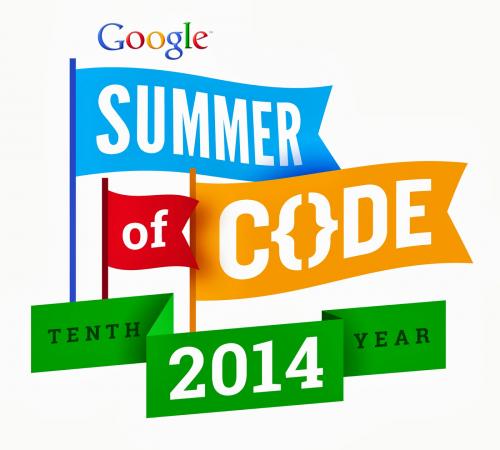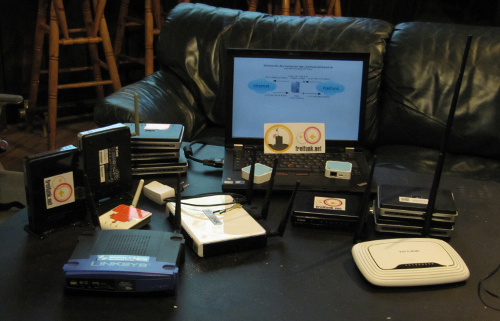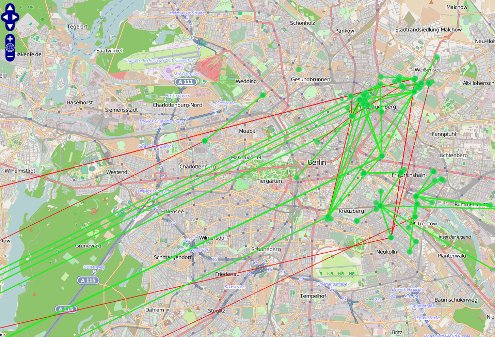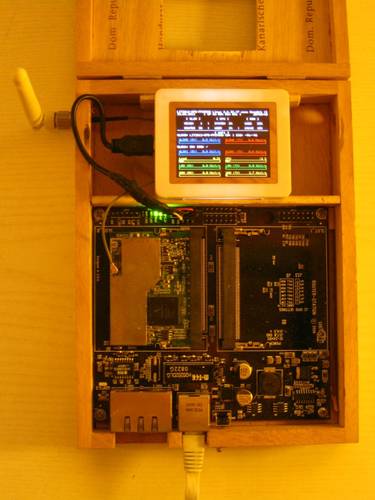Nach einige Zeit hat es mal wieder einen Versionssprung bei der Freifunk-API gegeben: Unsere Freifunk-API steht ab sofort in Version 0.3.0 bereit. Bestehende API-Dateien sollten schnell aktualisiert werden, da sich einige nicht rückwärtskompatible Änderungen ergeben haben.
Neuerungen und Änderungen der Spezifikation
- Services hinzugefügt, netz-interne Dienste können hier angegeben werden. Später soll aus diesen Daten eine freifunk-weite Serviceübersicht entstehen
- Timeline hinzugefügt, hier können Communities wichtige Meilensteine ihrer Geschichte eintragen (z.B. Gründung, Neugründung, wichtige Ereignisse wie Vereingründung oder Rekordstände bei Nutzern/Routern). Mit diesen Daten können schöne Zeitstrahlen erstellt werden
- TLD hinzugefügt, damit Communities die von ihnen genutzten Top Level Domains (.ffhh, ffl, …) benennen können. Die Informationen können genutzt werden, um die DNS-Konfiguration über die eigene Community hinaus nutzen zu können
- Kalender-Sektion entfernt, durch Feed vom Typ ics ersetzt. Eine eigene Kalenderspezifikation erwies sich als zu komplex. Mit ics-Files kann man leicht übergreifende Kalender erstellen
- Country als Feld aufgenommen
- Pattern zur Validierung von Eingaben für diese Felder eingeführt: urls, irc, twitter, email, facebook, ip-Adressen
- Zeitstempel von Unix-Timestamp auf ISO8601-Format umgestellt
- Netzwerke in CIDR-Notation
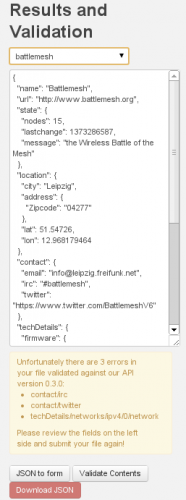
Änderungen am Generator
- Die Eingabefelder wurden umsortiert. Pflichtfelder verstecken sich nicht mehr hinter eingeklappten Elementen
- Der Generator kann API-Dateien validieren. Entweder wählt man seine Datei aus dem Auswahlfeld über dem Textfeld oder man kopiert den Inhalt einer Datei in das Textfeld
- Bei der Validierung werden die Daten direkt in die Formularfelder kopiert, so dass sie danach gleich bearbeitet werden können
- Gültigkeit von API-Dateien zeigt der Generator farblich an
- Das Ergebnis der Validation zeigt die problematischen Felder an, man muss sie nicht mehr erraten
- Zeitpunkt der letzten Änderung und API-Version setzt der Generator automatisch beim der Erstellung, wenn die Eingaben gültig sind
Weitere Änderungen
- die zusammengefassten API-Dateien legen wir mit jeder Erzegung gesondert ab, um später die Entwicklungsgeschichte verfolgen zu können (Anzahl Communities, Anzahl Router, …)
- Es gibt mehrere Ansätze, z.B. die Anzahl der Knotennummern in den API-Files automatisch aktualisieren zu lassen. Solche Scripte und Anleitungen sammeln wir im Github-Repository common.api.freifunk.net
Die gesamte Änderungsgeschichte ist Github-Repository aufzufinden. Fehler, neue Anforderungen oder Anregungen meldet ihr bitte auch im Github unter “issues”.
